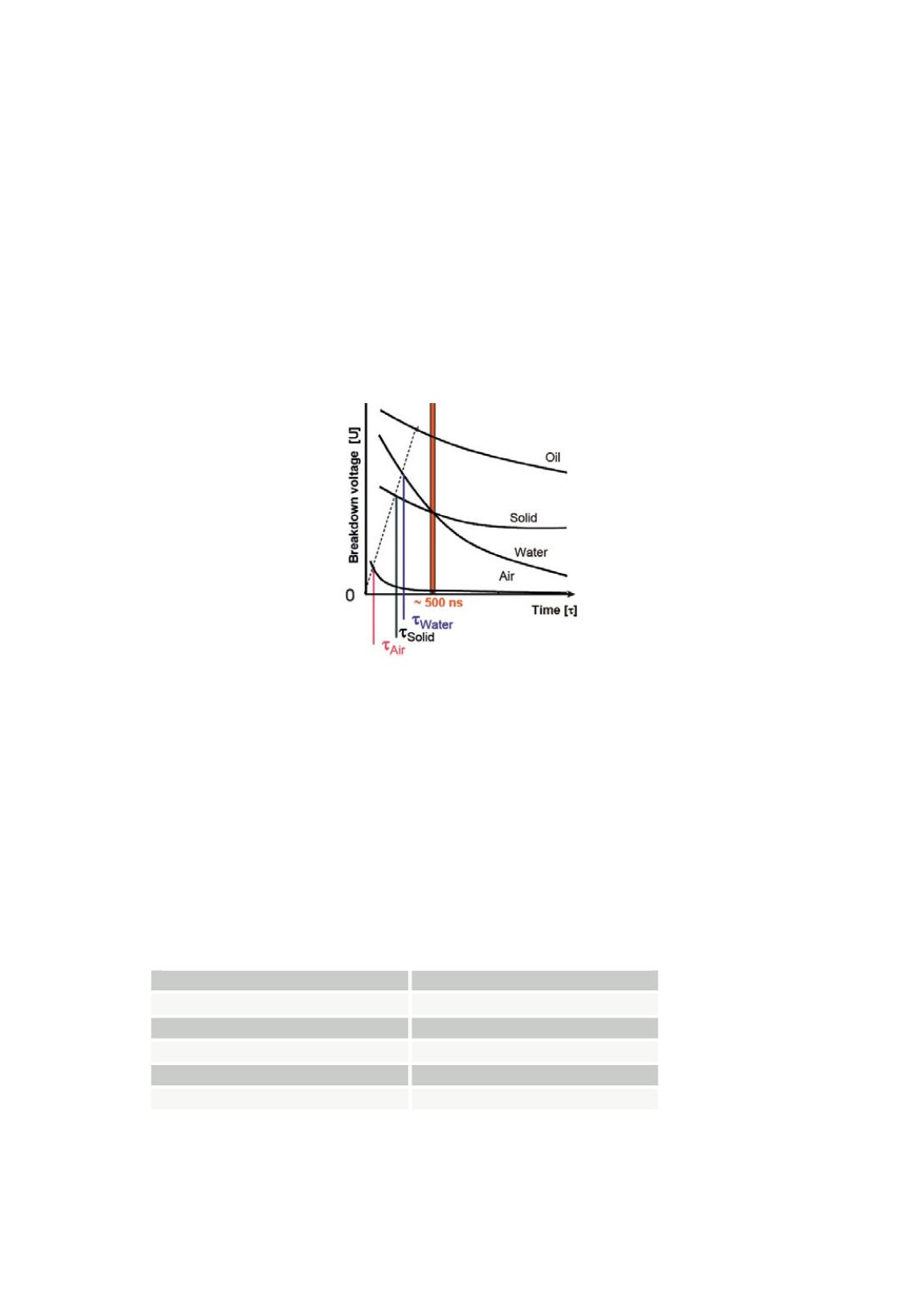

1 Background and Selfrag principle
SELFRAG plants are based on high voltage (HV) pulse power technology. Its
principle is based on the introduction of energy via electrical discharges into solids
immersed in water and situated between or near two electrodes. To achieve that,
SELFRAG reduces the voltage pulse rise time to below 500 ns (Figure 1). At such
situations water has a higher breakdown voltage than the solid (1). A discharge enters
the material and interacts with the solid by polarisation and field distortion effects. If
the discharge interconnects to the counter-electrode the track is filled with energy to
produce shock waves with local pressures of 10
9
[Pa]. Following fragmentation occurs
in a tensile dominated stress regime.
Selfrag principle for silicon crushing
The strength of the discharge and shock wave depends on the generator setup and can
be closely controlled in exact ranges. The energy depends on the available capacitors
and chosen voltage. Therefore the generator can be customized for any application.
To achieve fragmentation the introduced energy per surface must be high enough to
overcome elastic behaviour of the material.
For the crushing of silicon a Marx-generator with the following process setup has
been chosen to perform tests on pilot plant level:
Voltage (kV)
90-200
Pulse energy (J)
150-750
Electrode gap (mm)
10-60
Feed size (mm)
50-500
Processing mode
Batch
Max throughput (kg/h)
600
Figure 1:
Physical principle of the SELFRAG process
.
Table 1:
Parameter of Marx-generator and pilot plant
24


















